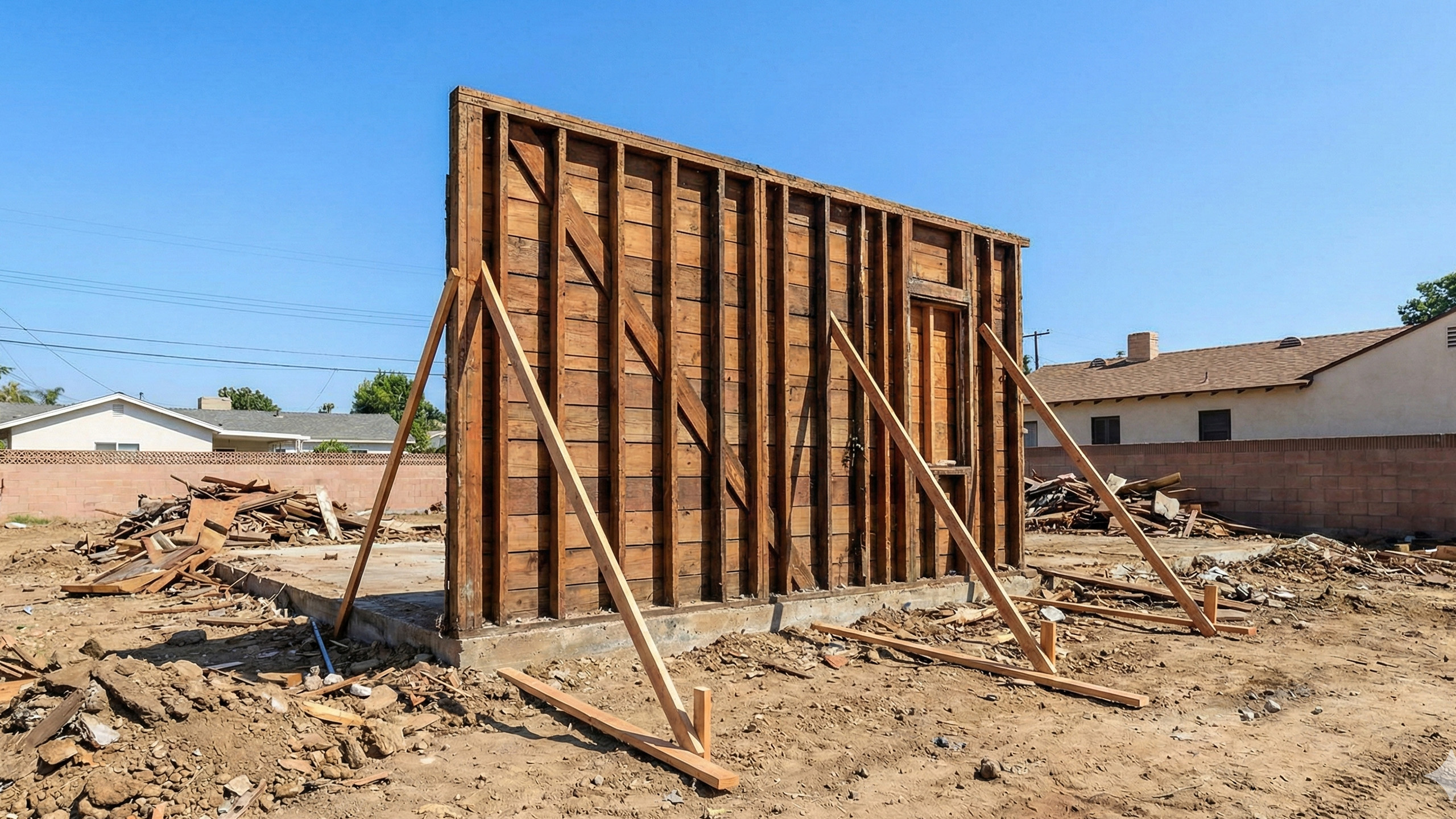How would you like your home to feel? When embarking on a home design journey, one of the most impactful choices is between open concept layouts and traditional floor plans. These floor plans determine how spaces connect, flow, and function.
In this article, you’ll learn about the characteristics, advantages, and challenges of both open concept layouts and traditional floor plans. Recognizing the importance of aligning your home design with your lifestyle, this article aims to empower you with knowledge to make an informed decision.
Whether you relish in the vast openness and fluidity that comes with an open concept layout or prefer the distinct room divisions that traditional floor plans offer - there are considerations for everyone. As you read this article, think about your lifestyle needs. How do you plan to use your space? What's your entertainment style? How important is privacy to you?
Every choice in designing a home has its trade-offs. Thus, understanding these trade-offs becomes vital in choosing a floor plan that resonates with you.
Understanding Open Concept Layouts

Back in the day, each room in a home had a specific purpose. They were often formal, and kitchens were usually closed off. Can you believe that in the 1950s, it was considered a big no-no for guests to see the kitchen?
But as time went on, architects and homebuilders realized that we could make the most of our space with open floor plans. Families changed too - we didn't need separate living areas like before. And with more people living in cities, homes got smaller. That's when we needed living spaces to do more than one thing.
Nowadays, open floor plans break down walls to blend at least two living areas together, while still keeping bathrooms and bedrooms separate. The key lies in crafting a space that is adaptable and versatile, capable of keeping pace with the ever-evolving times. Open concept floor plans are all about modern, luxury living.
Advantages of Open Concept Kitchens
It’s a matter of preference, but a majority of homeowners tend to love the absence of walls in the kitchen, as it makes hosting and socializing a breeze. Open concept kitchens are the go-to choice for modern homes because they have so many awesome advantages, some of which include:
Enhanced spaciousness: By removing walls, you can create an open and spacious environment that gives the illusion of a larger and more expansive space. It not only enhances the visual appeal but also promotes a sense of freedom and flexibility, allowing for seamless movement and improved functionality within the area.
Improved communication: Without the confinement of walls, families can interact freely and effortlessly, fostering a sense of togetherness and connection, even when engaged in different activities. This open and inclusive environment encourages shared experiences while allowing for individual pursuits, creating a harmonious balance within the family dynamic.
Facilitated multitasking: If you have kids or pets, you can effortlessly keep an eye on their activities or have great conversations with your guests, all while skillfully juggling tasks in the kitchen and whipping up delicious meals.
Enhanced Illumination:These open layouts allow ample natural light to extend into interior spaces and makes the space brighter and more inviting.
Challenges of Open Concept Kitchens
There are also challenges associated with open concept kitchens that should be considered:
Tidiness maintenance: The kitchen, with its open layout, allows for a constant view, making any mess or clutter easily noticeable. This heightened visibility ensures that maintaining cleanliness and organization becomes a top priority in this central hub of many modern homes.
Distractions: In an open space, where walls are absent, noise has the potential to propagate and carry, causing possible distractions that can disrupt focus and concentration.
Lack of privacy: It's important to consider privacy, especially when sharing the space with family members. Striking a harmonious balance between interaction and personal space is key, as external noises can be distracting when you're trying to focus on work.
The Allure of Open Concept Great Rooms
An open concept great room, which combines the kitchen, dining, and living areas, has gained popularity among homeowners for its versatility and functionality. This spacious layout offers a welcoming and airy environment for entertaining guests. With the absence of walls, it promotes effortless interaction and fosters a lively and social atmosphere. Additionally, the flexibility in furniture arrangement allows for customization based on preferences, whether it's creating a cozy seating area or leaving ample space for dancing.
Unveiling the Hidden Flaws
While open concept great rooms offer numerous benefits, it's essential to consider potential drawbacks as well. Some common concerns associated with these layouts include:
Controlling the temperature: With larger spaces and interconnected areas, it requires strategic planning and efficient HVAC systems to ensure consistent and comfortable temperatures throughout the entire space. So, when designing or living in a home with an open floor plan, it's important to consider the unique challenges it poses for temperature control and explore appropriate solutions.
Fewer load-bearing walls: Walls serve a purpose beyond just dividing rooms. They provide a sturdy foundation that supports your home, which is particularly advantageous for two-story layouts. When constructing a home with an open floor plan, steel beams and other reinforcements are necessary to bear the load of a second floor or even just the roof.
Dead Spaces: Larger open rooms can sometimes result in areas that are difficult to furnish or decorate effectively. These "dead spaces" may feel awkward or underutilized, posing challenges when it comes to optimizing the overall functionality and aesthetics of the room.
Examining the Advantages and Considerations of Room Divisions in Traditional Floor Plans

You will find that traditional floor plans offer distinct room divisions that serve your specific functional needs and preferences. This layout creates a structured environment where specialized designs can flourish, resulting in tailored spaces that match your personal style and utility.
Advantages of Distinct Room Divisions:
Meeting Functional Needs: Thoughtfully designed separate rooms cater to various activities, optimizing each space for your intended use. This attention to detail enhances your experience, creating tailored environments for reading, entertainment, or work. Every room is designed to meet your specific needs and preferences.
Specialized Designs: With individual rooms, there's freedom to theme and design each space according to its purpose without compromising the aesthetic of adjacent areas.
Privacy Enhancement: Enclosed spaces offer increased privacy, perfect for quiet study areas or confidential discussions.
Noise Control: Walls act as sound barriers, minimizing disruptions between spaces — an ideal feature for homes with diverse daily routines.
Considerations When Working with Room Divisions:
Monitoring Challenges: With walls separating spaces, it becomes more difficult to supervise children or pets from a central location.
Isolation Concerns: Enclosed rooms might lead to feelings of seclusion among family members, particularly when individual activities take precedence over shared experiences.
Increased Costs: More walls mean more materials and potentially higher construction costs, not to mention potential for additional expenses for decorating and furnishing each room.
Consider the advantages and considerations of traditional floor plans with room divisions. Assess how this design serves your functional needs while contemplating the lifestyle impact of a structured home environment.
Choosing a Safe and Functional Floor Plan
When it comes to designing your home, safety should always be a top priority. Whether you prefer an open concept layout or a more traditional floor plan, there are important safety considerations to keep in mind.Are you living with extended family members or young children who require ample space and privacy? Perhaps there are individuals with mobility issues or other disabilities in the household, necessitating special safety considerations.
In such cases, it is crucial to prioritize their unique safety requirements. Thankfully, with the expertise of a qualified Design-Build firm like Letter Four, you can ensure that every aspect of your floor plan is tailored to meet these needs.
Remember, there is no one-size-fits-all approach when it comes to floor plans. It's about crafting a design that caters to the specific dynamics and safety concerns of you and your family, resulting in a home that truly reflects who you are.
Conclusion
When it comes to creating your dream home design, understanding floor plans and options is key. Both open concept layouts and traditional floor plans have their own pros and cons, depending on your lifestyle and preferences.There's no right or wrong choice here. It's all about what works best for you. Keep in mind as well that you don’t necessarily have to choose between one type of layout, a Design-Build firm like Letter Four design creatively to develop a plan that combines the best of both worlds.
So why not take advantage of a free initial consultation? Talking about your floor plan needs is just a click away. By investing this time now, you'll be one step closer to building your dream home. Don't wait, start shaping your future living space today!






.svg)























.png)